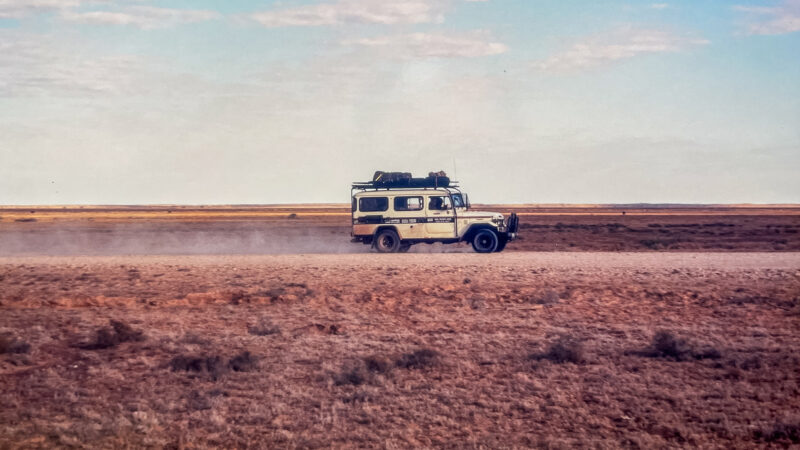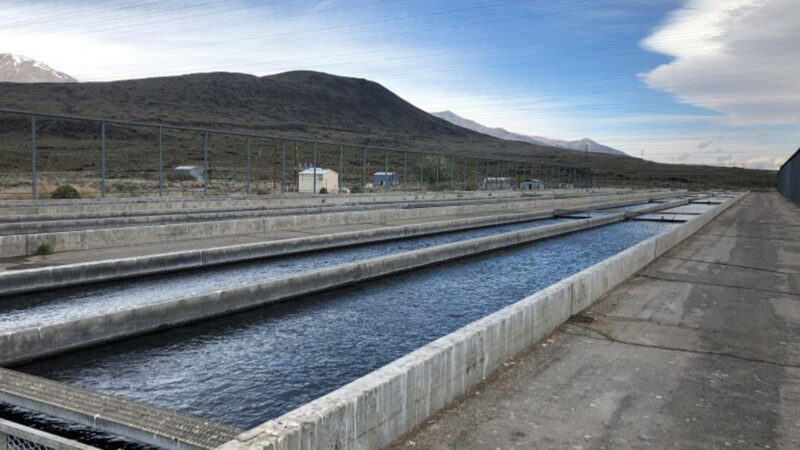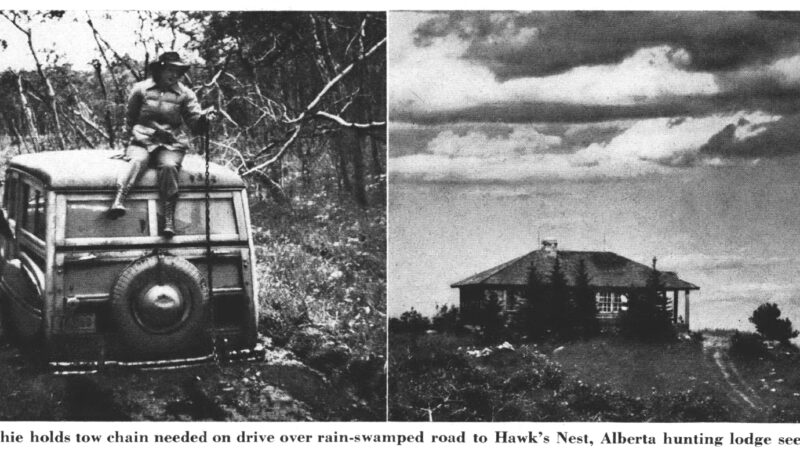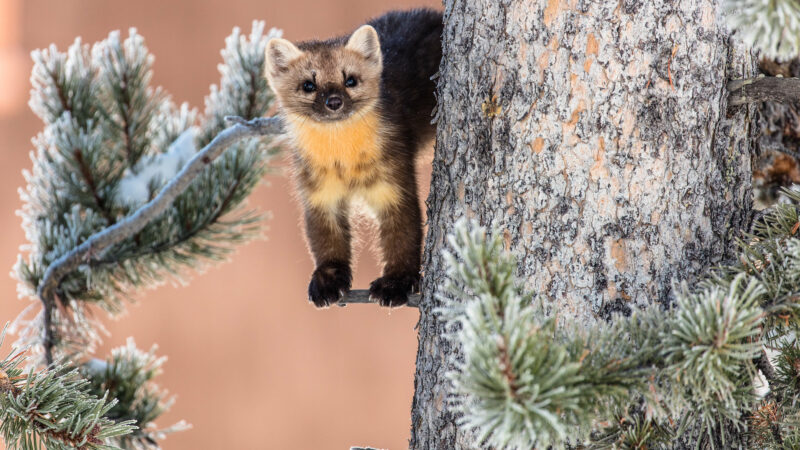Tales of Spring Subsistence Hunting in the Arctic: Bot Fly Larva, Caribou Fetus, and Boiled Eiders
Springtime in Alaska’s high Arctic reveals itself in unique ways. Migrating bowhead whales swim past tiny coastal villages. White-fronted geese paint the skies across the still-white tundra, and waves of eiders wing their way over the open leads in the Arctic Ocean. Caribou begin their ritual trek north to reach calving grounds. Insects emerge from seemingly every cubic inch of water.
For a few years in the early 90s, my wife Tiffany and I worked as school teachers in Point Lay, Alaska. Fewer than 100 Inupiat Eskimos inhabited the village at the time, and it’s still one of the smallest native villages in Alaska’s vast, 88,000-square-mile North Slope Borough.
After a year of living in Point Lay, we qualified for subsistence living, which generally means only light regulations when it comes to harvesting fish and game for food. Because we were white, we couldn’t hunt sea mammals — whales, pinnipeds, and polar bears were off limits. But many other critters were fair game. And because there was no store in the village at the time, if we wanted to eat meat, we needed to hunt or fish for it. Since boyhood, it had been my dream to learn to hunt, trap, and fish with the indigenous peoples of Arctic Alaska amid some of the harshest conditions on the planet.
In our first year in Point Lay, the temperature dropped below zero in early October, and never got above that mark for 199 consecutive days. Two months of total darkness define the winter. In the middle of the summer, the sun’s path is no more than a tiny circle overhead.
Spring was my favorite time in the Arctic. While temperatures were still cold, and snow and ice prevailed, sunlight lifted the spirits.
By early May, 20 hours of daylight shine. Dusk is slight, making for 24 hours of daily hunting opportunities. I was surprised how quickly I got used to running on just a few hours of sleep each night.
Many of the locals put tinfoil in their windows to block out the sunlight. Not us. After the long, dark, cold winter, we welcomed the light—every bit of it. Plus, I wanted to look out the windows to watch caribou streaming by. Spring was go-time. Winter was a time of rest.
Geese, Ptarmigan, Caribou, and Bot Fly Larva
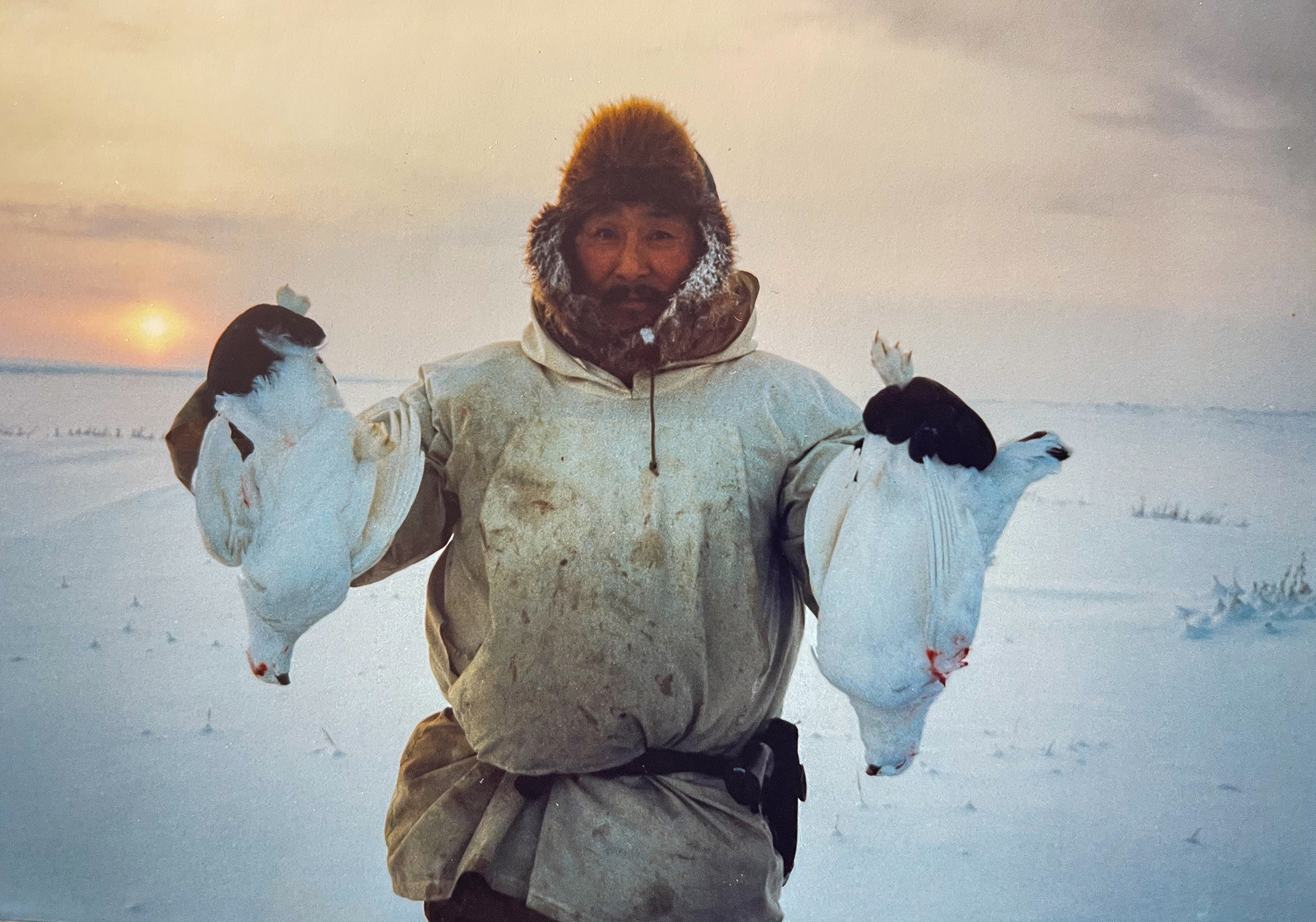
Since most waterfowl on the North Slope headed south for the winter before the regular September 1st fall opener, spring was the only option for subsistence communities to hunt ducks and geese. So in early spring, most Inupiat hunters break out the shotguns in anticipation of waterfowl returning.
One spring day in 1992, I headed out on an early spring goose hunt with my good friend and esteemed Inupiat hunting partner, the late Danny Pikok, Sr. What this man taught me about hunting and trapping in the Arctic changed my life.
A few flocks of white-fronts had been seen the previous two days by people in the village. Danny wanted to get out and hunt them. His family loved eating geese and Danny often invited me on his hunts. I almost always accepted the kind offers.
The snowmobile ride was bumpy across the tundra. It was so desolate, so flat, and white in all directions. It felt like we could spend days out there and never see a goose or any other living creature. We eventually stopped, and the land surrounding us appeared to be the same in all directions. No water was visible, but Danny assured me that if flocks of specks were moving north, they would pass by this prime location. Danny pointed out that we were on a small rise where two depressions in the tundra met. He said he’d shot a lot of geese from this spot over the last 20 years.
We cut blocks of snow and ice and piled them on top of one another. Soon, we had a couple of respectable-looking goose blinds. Temperatures were well below freezing, and the wind was blowing hard, gusting in excess of 20 mph. It felt good to huddle behind the blind, out of the wind. We had no decoys, but Danny assured me the conditions were right for pass shooting.
I settled into my blind, and a willow ptarmigan flew right at me. It landed five paces away. I stood up, the bird flew, and I shot it. Sipping hot chocolate, fidgeting to keep warm, we didn’t see a living creature for the next two hours.
Then, from nowhere, as if it were a figment of our imagination, a lone caribou appeared on the stark, white horizon, miles away. The animal caught Danny’s eye. He glanced in my direction. I could tell Danny was smiling from 50 yards away beneath his fur cap and dark sunglasses. Danny loves caribou, and if there’s one in sight, he’ll do all he can to get it.
Getting up from his blind, Danny headed toward his snowmachine. He pulled a rifle out of its case, slipped some shells into the magazine, then unhitched his sled. Danny yanked the starter rope of his machine and was off.
I stayed in my goose blind, watching as Danny approached the caribou through low spots in the tundra. Then Danny stopped his machine. Resembling a four-legged animal more than a human figure, Danny walked a few hundred yards in a slouched over position, closing the distance to the caribou. I watched through binoculars. Danny shouldered his gun, then fired. The off-hand shot set Danny back on his heels. The caribou bolted. I heard another shot. The lone caribou cow took off running and Danny fired again, and again, until he was out of shells. Then the cow turned and began trotting my direction.
Still over a half-mile away, I figured there was no way the caribou would pass within shotgun range (and I had no rifle with me). At two hundred yards, it continued right at me. Its gait was slow and steady. At 100 yards, I hunkered behind the blind, wishing I’d brought my .30-06. Unbelievably, at 50 yards the cow was still on a beeline for me. Danny remained where he’d shot from, not wanting to spook the animal.
At 25 yards, the caribou sauntered by the left side of my blind. This was as close as it was going to get. I raised up, put the bead of my 12-gauge on its nose and fired. It fell stone dead. It was the last day of the cow caribou season. (It’s important to point out here that everything we did was perfectly legal under subsistence hunting rules at the time).
Danny watched the whole thing unfold. “I told you this was a good spot,” he smiled, snowmachine engine still sputtering. He was elated. He took off his right mitten and reached out to shake my hand. I removed my glove. We shook hands, as is the culture, no matter how cold it is.
Danny dug out a knife from his parka pocket and opened the caribou’s belly. He yanked out a kidney. We consumed the organ in our usual ritual. I had flashbacks of my first caribou hunt with Danny’s son, three years prior, where I got my first taste of this tradition. Unable to contain his excitement, Danny dove back into the gut cavity. I wasn’t sure why.
Seconds later, Danny extracted an eight-pound, hair-covered fetus. Proudly, he held it out in my direction. “I don’t have to eat that, do I?” I asked. He smiled, “This will be very good eating for the elders.”
As a fetus matures within the womb of a cow, it becomes a much-sought-after delicacy among the native people this time of year. The fetus is tender to gum and is popular among the elders since so many are missing their teeth due to lack of dental care. I was honored to see Danny so jovial.
We gutted the caribou, setting aside the heart, liver, and lungs. Danny skillfully disarticulated the web of fat from around the caribou’s stomach. He tied a few knots in it and made a basket. I asked what it was for. Danny pointed to the skin of the caribou. He cracked a grin, bent over with his knife, slit open one of the round, fifty-cent sized boils in the caribou’s hide, and withdrew a grub the width of an index finger and about an inch-and-a-half long.
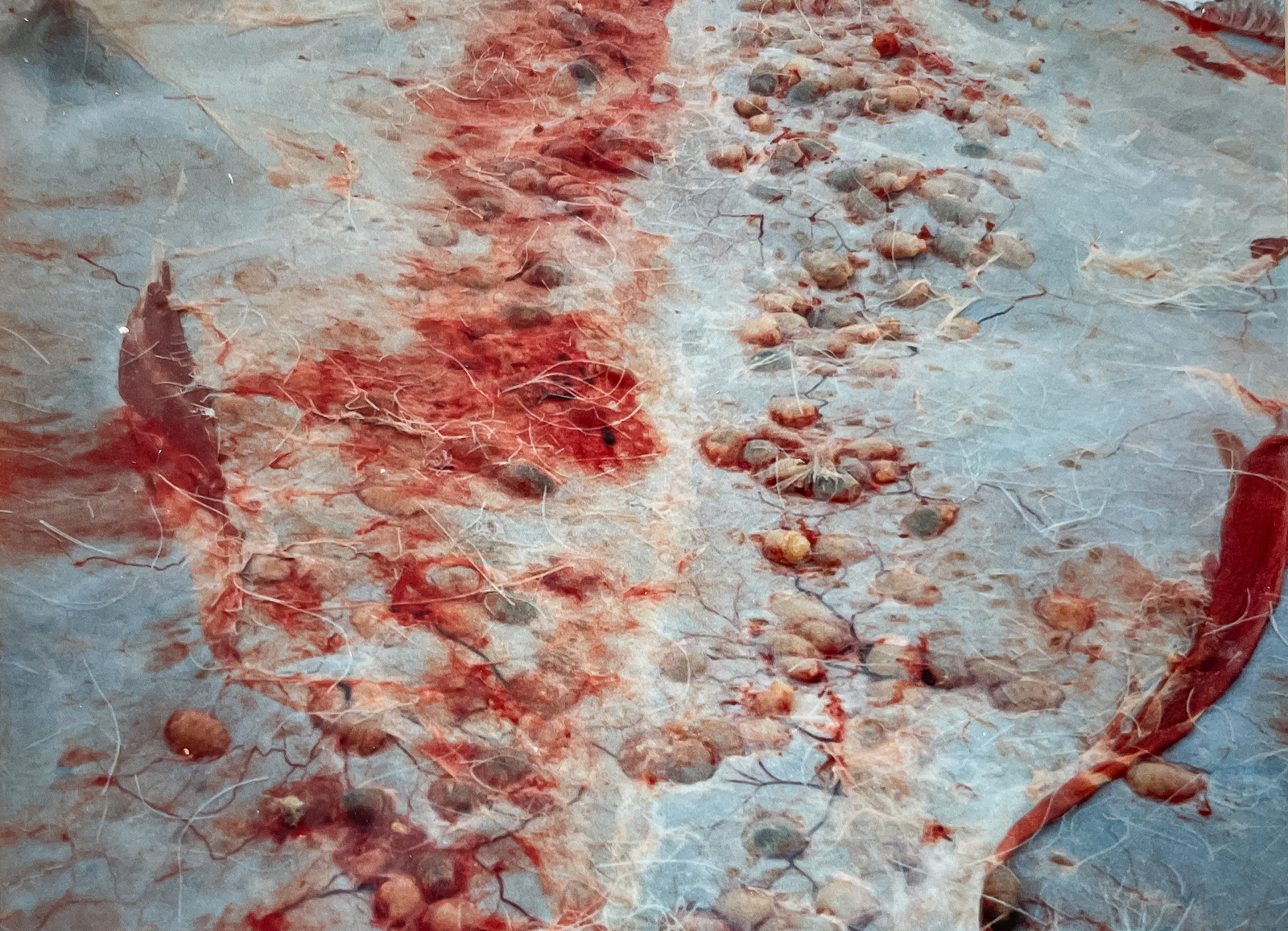
“Eskimo candy,” he bubbled, and popped it into his mouth. Bending down, he repeated the drill. Danny ate a half-dozen of the grubs like they were candy. He offered me one, “No thanks, I’m full from the kidney,” I grinned. The caribou had nearly two hundred of these larvae on its back.
The Eskimo candies are actually bot fly larvae. In summer, female bot flies lay their eggs on the lower legs of the caribou, attaching them with a sticky mucus. A week or so later, the eggs hatch and the larvae burrow their way under the hide of the caribou. The larvae then migrate through the muscle tissues of the caribou, upwards until reaching the soft tissues around the esophagus. There they hang out, literally, for five months, attached to the throat tissues of the caribou. Then the larvae migrate to the caribou’s back, traveling within the subcutaneous tissues. At this point, the larvae find a warm spot on the back of their host and continue developing into a grub. Each grub is contained inside a blister-like sack. They use their spiracles to bore a small hole in the hide, which serves as a breathing hole, and later an escape route to the outside world. After a couple of molting sessions, the larvae emerge, dropping to the tundra in late spring to early summer. One month later, the adult fledges from the pupal case, and the bot fly breeding season begins anew.
On several occasions, I’ve watched caribou violently cough to rid themselves of the larvae hanging at the back of their throats, restricting their breathing. The caribou, with its superb insulation and resiliency to live in such harsh conditions, is the perfect host for the bot fly.
Danny, who was the maintenance man at our school, told me how as a young boy growing up in Barrow, people would eat every larva they could get. If there were more than they could eat on a freshly killed caribou, they would take the remainder home to the family.
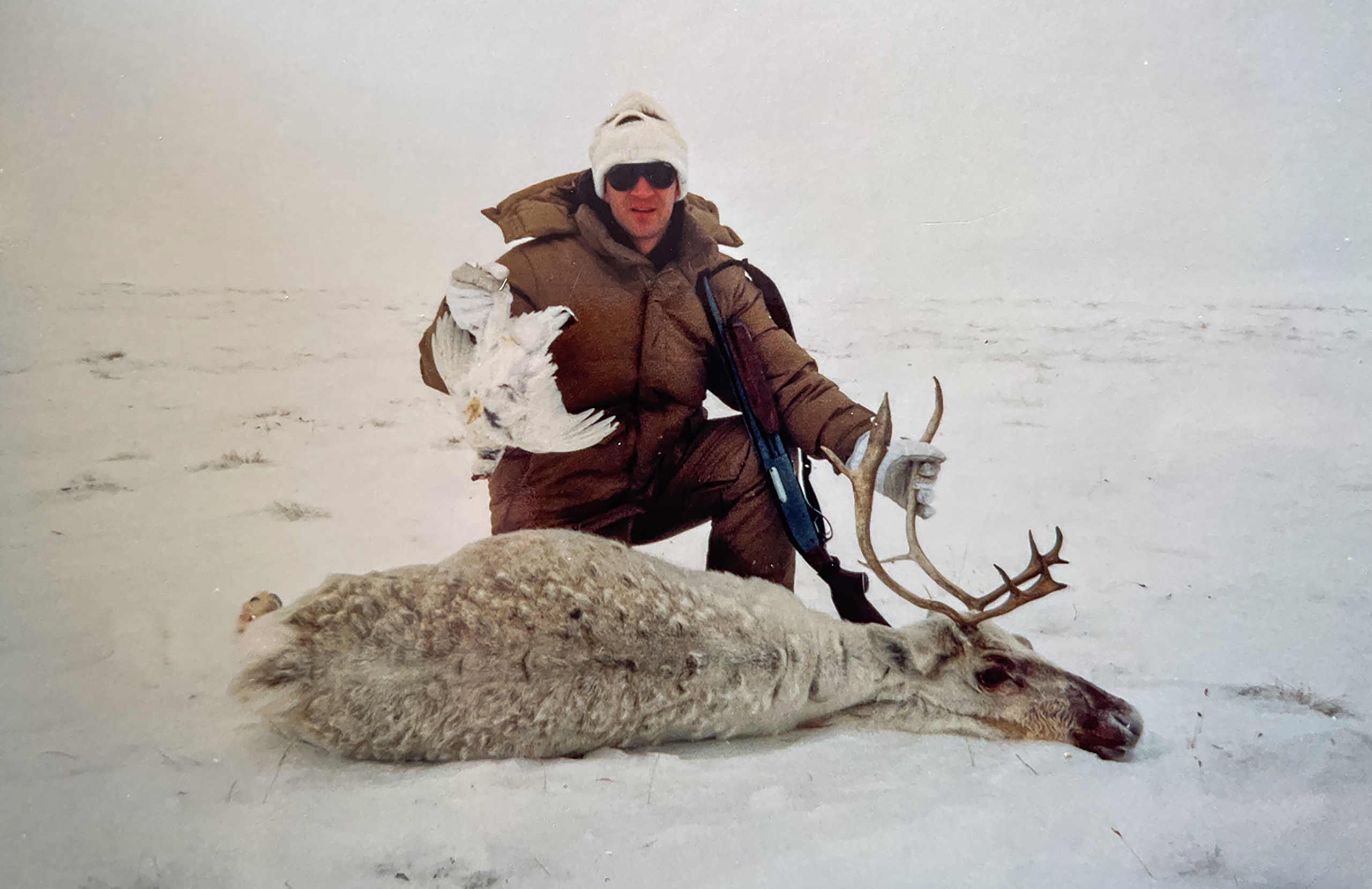
Today, few Native hunters utilize the bot fly larva as a staple in their diet. It’s a tradition that has passed by many of today’s elders, largely because it’s not necessary with access to outside food sources. Some hunters will toss a few in their mouths, perhaps more to commemorate the ritual their ancestors practiced for survival in the not-too-distant past, than for the necessity of survival.
Loading the sled with the caribou, fetus, hide, and dozens and dozens of wiggling larvae in the fat sack Danny crafted, we headed home. We didn’t see a goose that day. Looking back, I regret not trying the larva. Since then, anywhere in the world I’ve gone and been presented a similar opportunity, I’ve accepted it.
Hunting Spring Eiders
A few days later, Danny and I were on the pack ice, hunting king and common eiders. We drove our snowmachines 22 miles onto the ice. It was 2:00 a.m. The sun was shining bright in the sky.
We stopped near the edge of the open lead, where the pack ice breaks apart due to ocean currents. The ice is 10 to 12 feet thick. Standing on it, hearing and feeling it shift beneath you is surreal. Many elders shared stories of how in the past, hunters on the pack ice often went out with their dog teams for seals and polar bears, never to return. It’s speculated that many got caught in breakup, with no way to return to land.
Fifty yards from the edge of the open lead, we unfolded a blue plastic tarp, the kind many of us carry in the back of our truck. We held it down with chunks of ice, parked our snowmachines off to the side, and piled up snow and ice in front to hide them.
They would serve as our blinds. We used no decoys.
“When the ducks fly up the lead they’ll see the blue tarp and think it’s water,” Danny said.
The tarp was like a magnet. Every wave of eider that flew the lead dipped over the tarp—thousands of them. We went home with both common and king eiders that morning.
On our snowmachine ride back, we hit open water where there had been none before. I instantly felt dread sink in; we were stranded on floating pack ice. Danny was unsure. Wasting no time, we traveled north as fast as we could. Pack ice, even when covered in snow, is hard, like concrete. It’s jumbled and uneven, having been shifting around all winter long atop the moving sea. So sometimes we moved at a crawl.
We traveled nearly 30 miles before Danny stopped. I pulled up behind him. He stood on the seat of his snowmachine, looking.
“The river broke,” he said, pointing. “We have to hurry and get on the other side of it.”
Eventually, we made it to land, but we had to travel several more miles upriver where we could cross. Though we traveled just shy of 100 miles out of our way, we eventually made it home. For Danny, it was a normal day of hunting on the frozen Arctic Ocean.
When we got back to his house, Danny showed me how to hang the ducks. He put their necks in a strap and hung them on the sunny side of his house.
“Let them hang in the sun for 4 or 5 days, then they’ll be ready to boil.”
“How will I know they’re ready to boil?” I asked.
“They’ll bloat, then their skins will start sliding off as all the fat underneath melts,” Danny said. “When all the skin is off, put the duck in a pot of boiling water, then eat.”
All the locals cooked eiders the same way: They boiled the whole bird, guts, feet, head and all. Tiffany cooked ours in a crockpot. They were good. We ate a lot of eider ducks over the years, including some I intercepted in early fall as they migrated down the coastline.
Read Next: I Nearly Froze to Death When Our Argo Sank in the Middle of an Arctic River
Back then, I wasn’t an outdoor writer or photographer. Those jobs came later. However, the knowledge and skills I acquired during our time in Alaska’s Arctic helped pave the way for my 25-year writing career.
Many waterfowl hunters drool when I share stories of hunting eiders with the Inupiat men of the Arctic. I still book king and common eider hunts and know the price tag these prized birds carry. I’ve been on those fall hunts, too. But my fondest memories of hunting eiders is with my Eskimo friends, where we shot birds just to eat them.
The post Tales of Spring Subsistence Hunting in the Arctic: Bot Fly Larva, Caribou Fetus, and Boiled Eiders appeared first on Outdoor Life.
Source: https://www.outdoorlife.com/hunting/subsistence-hunting-arctic/


